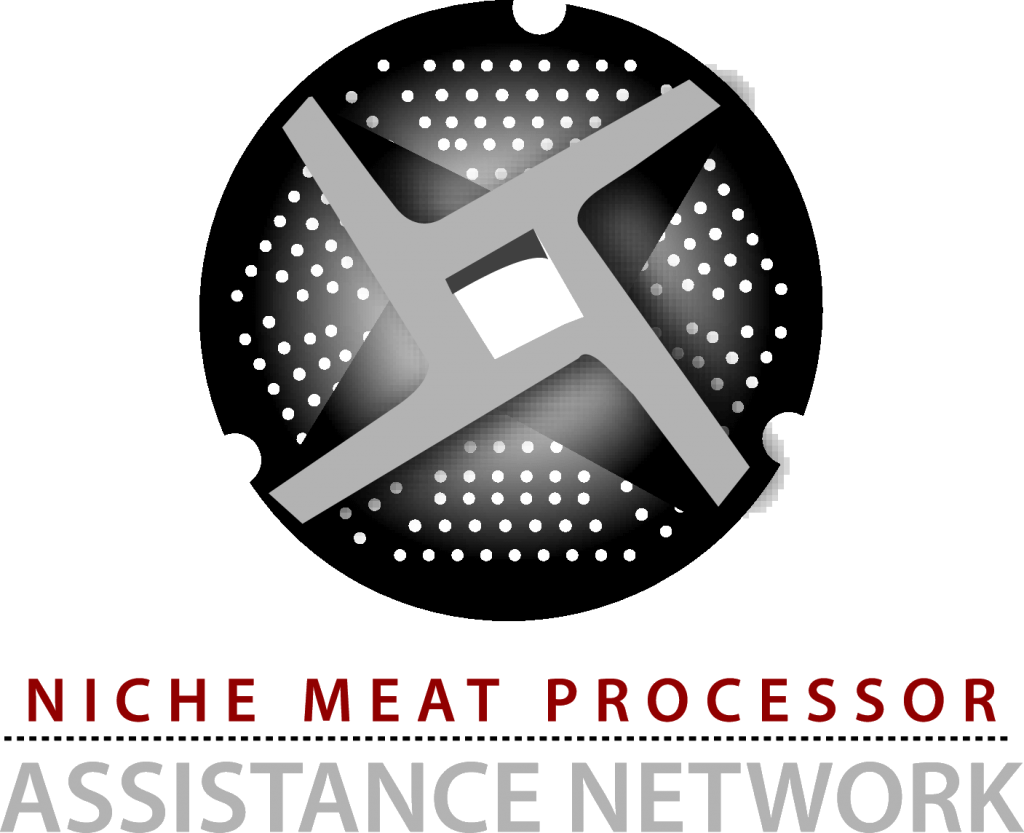To view our meat processing video Part I: The Set-up — the Mobile Unit and the Farm Site* click here.
* (c) Niche Meat Processor Assistance Network 2009
Audio Text
Interview with the farmer: “My name is Bruce Dunlop, I raise pigs and sheep here on this farm. We’ve been making use of having our co-op, which runs this mobile slaughter trailer, for all of our processing. They operate under USDA inspection, and that’s given us a big advantage, where we can sell our products and the quality of the products that gets done. So we’re really quite happy with that.”
NARRATOR: In this video, you’ll see what a USDA-inspected mobile slaughter unit looks like, and also how the farm site is set up.
This is the Island Grown Farmers Cooperative mobile slaughter unit. Today it’s visiting a farm on Lopez Island, in the San Juan Islands of Washington State. The unit arrived last night – after a slaughter day at a different farm – and pulled in to its usual spot next to the barn. The unit comes to this farm on a monthly basis. Other members of the co-op occasionally arrange to bring their animals here for slaughter. This unit visits approximately 30 farms each year, all co-op members.
Mobile units vary in size, but this one is 24 feet long, without the hitch. It is pulled by a small semi- tractor. This is the processing room. Through those doors is the cooler, where the carcasses will be hung. The mobile unit arrives at the farm with everything it needs to slaughter, split, and clean a carcass, including all its wash water.
Two butchers are operating the unit today: the Managing Butcher and an assistant. An MSU can be operated by just one butcher, but two can do nearly twice as many animals in one day. The farmer is having pigs and sheep slaughtered today, and another co-op member has brought two cattle. The inspector, from USDA’s Food Safety and Inspection Service, is here for the full 8 hour day, to inspect every animal before and after slaughter.
Interview with the USDA inspector: “I’m Jim Donaldson, and I’m a GS-9 with the USDA. I come along with the mobile unit & do all the inspection. One of the major things for this plant is that the farmers, instead of taking their animals off island or to the closest plant, which is probably a couple hundred miles, we can come to them. So there’s less stress on the animals…it cuts the stress.”
NARRATOR: In lieu of an office for the inspector, as FSIS usually requires, the co-op has provided the inspector with a locking file cabinet, kept on the mobile unit, to keep inspection records. Clean, convenient bathroom facilities are available in the farm house; some farms provide a port-a-pot.
FSIS has a few basic requirements for the farm site to assure humane treatment of the animal, the safety of the inspector, and, of course, food safety. First, the animals need a place to relax for inspection without putting the inspector in danger. What this looks like depends on the species of animal.
The cattle were brought to the farm in a trailer, and they stay here for inspection. The pigs and sheep are inspected in their corral. Then one is brought out into the chute.
Here’s how a different member farm does it, with a chute and a head-gate. After stunning, the outer gate opens to release the animal onto a concrete pad.
If the inspector condemns an animal, there must be a place to keep that animal separate from other livestock, for example a partitioned off corner of a corral. If a vet is called out to inspect, the animal needs food and water during the wait.
Finally, there must be a concrete pad, or clean and dry dirt, or clean grass where the animal falls after stunning, for initial bleed-out. This concrete pad cost the farmer $1000, because he did the labor himself. While not required, the pad makes clean up easier, especially if the farm is hosting the unit on a regular basis.
This video project was funded by the W.K. Kellogg Foundation. Many thanks to Bruce Dunlop and the Island Grown Farmers Cooperative; Yer Vue, Xang Chang, and Chris Benedict at Washington State University; and Zach Mull.
This is a Niche Meat Processor Association article and was reviewed for compliance with federal, state, and local regulations by members of the NMPAN community. Consult with USDA’s Food Safety and Inspection Service and/or the appropriate state or local regulators before making changes in your operation. For more information, refer to NMPAN’s articles on mobile slaughter units.


